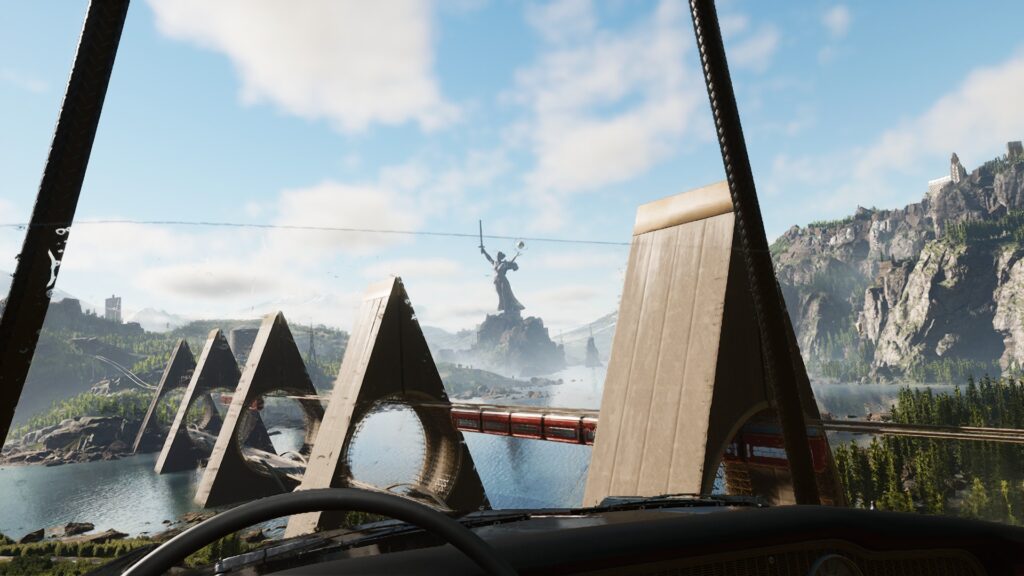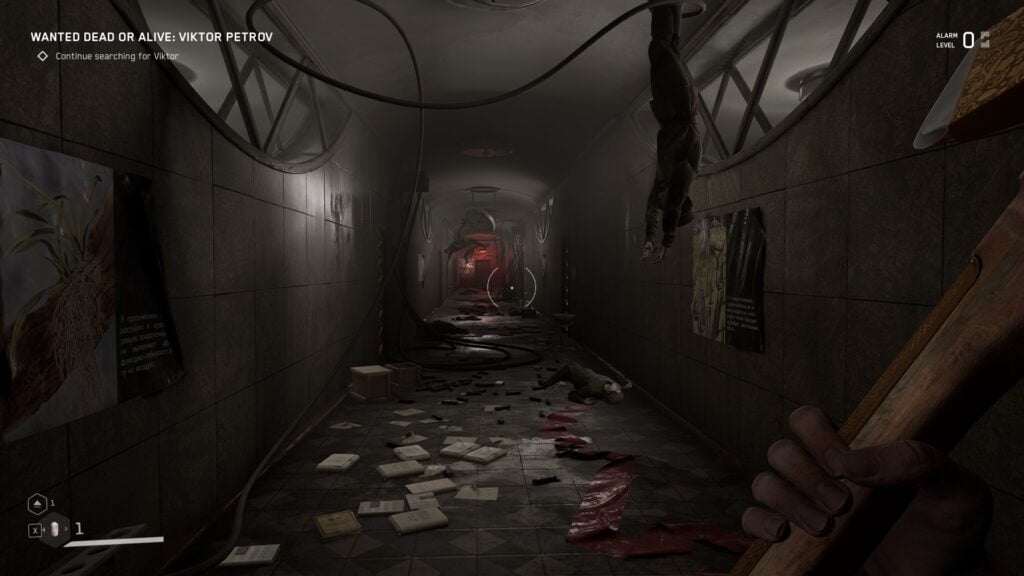Atomic Heart has been a long time coming. First announced back in 2017, for several years it looked like the game was almost tantamount to vapourware. It has also recently been embroiled in some controversy, given the Russian developer Mundfish’s supposed connections to the Putin regime and the studio’s failure to conclusively condemn the illegal invasion of Ukraine. And yet, here it is; a wildly ambitious game which tries to do a whole host of things, and only succeeds at some of them. Nonetheless, the core gameplay and the fantastically beautiful setting mean Atomic Heart is destined to become a cult classic years from now.
Atomic Heart takes place in a retro-futuristic alternative history 1955 where the Soviet Union made vast advancements in science and industry, becoming the world powerhouse in robotics. This is thanks to the work of scientist Dmitry Sechenov, who invented a liquid programmable material called Polymer. This allowed for all soviet industry, farming, and other manual labour to be entirely automated. When the Second World War broke out, Nazi Germany was defeated by 1942 thanks to these advancements, although the Nazis unleashed an engineered virus called the Brown Plague which killed millions, creating international demand for the robotic automation which the USSR controlled.
You play as Major Sergey Nechayev, known as Agent P-3, who works for Dr. Sechenov. On the eve of the rollout of “Kollectiv 2.0” (basically a precursor to the Internet), the vast array of robots suddenly go haywire, attacking and killing everyone. Your job is to hunt down those responsible and restore order to Facility 3826, where much of the technology was originally created. The plot is generally fine but often takes a backseat to the actual gameplay, as you’ll be regularly tasked to do a variety of fetch quests which primarily act as a means to send you to all corners of the facility, seeing the damage the robots have wrought and the architectural glory of these futuristic Soviet buildings. The major problem, however, comes in the form of the dialogue and script.

The English dub of Atomic Heart is, dare I say, diabolically bad. Agent P-3 continually sounds like Duke Nukem, swearing constantly, complaining to Char-les (his artificial intelligence glove) about absolutely everything and basically continually trying to give off a massive badass, snarky attitude which actually makes him a massive bastard. This isn’t helped by the fact that he rarely shuts up, continually quipping and swearing about “crispy critters”, or moaning about having to do a fetch quest the game is sending you on. Secondary character dialogue is generally not so awful but the pacing in many cutscenes seems off, as it appears that the animation was scripted for the Russian dialogue, which when translated into English makes everything seem unnaturally hurried.
The problem with this script writing is that it ruins a lot of the BioShock-esque atmosphere which Atomic Heart is trying to create through its worldbuilding and environments, as P-3 swears, moans or says decidedly 21st Century phrases when it’s supposedly 1955. The vending machine Nora which sexually molests P-3 repeatedly also does not help matters. It only took two hours until I was utterly fed up listening to P-3 and switched to Russian dialogue, which is far less irritating. Alongside feeling more authentic for what is supposed to be a Russian facility, it means that a lot of the snarky attitude of the English dub is lost in translation.
Gameplay though is where Atomic Heart shines. Definite cues have been taken from several titles, most notably BioShock original, BioShock Infinite and Arkane’s Prey (2017). At the beginning of the game, you’re equipped with an axe and a shotgun, but you’re given precious little ammunition for the latter. Hence, you need to make judicious use of the axe in dispatching enemies, alongside hunting the environment for resources to pick up which can then be used to craft weapon upgrades and ammo, once you discover the blueprints for crafting it. The combat feels weighty and deliberate, splitting the difference between the speed of BioShock Infinite and the clunkiness of BioShock original.

The shotgun itself is very satisfying, shooting off limbs and decapitating robots at close range. All weapons can be extensively upgraded, and you’re encouraged to experiment as removing an upgrade to choose a different one gives you back all the previous resources you spent. You gradually unlock more weapons including the classic Makarov pistol, a Kalashikov rifle, as well as more melee weapons and some futuristic armaments. Eventually, ammo does become relatively plentiful if you’re crafting enough, but the early sections of the game definitely reminded me of the careful gameplay which Prey demanded of the player.
Alongside your guns, you also have a variety of special powers straight out of BioShock, including Shock and Freeze, which either zaps with electricity or immobilizes foes. The most fun of these is probably Mass Telekinesis, allowing you to throw whole groups of enemies up into the air before either shooting them or hurling them back to Earth. The enemy variety is high with not only humanoid robots but a variety of flying drones, progressing up to huge tank-like beasts. The designs of all of these are memorable, and the difficulty curve ramps up in such a way that you never feel like you’ve become an unstoppable powerhouse if you’ve been diligently upgrading, as you’ll be introduced to tougher and bigger automatons.
Another major strength is certainly the setting. Facility 3826 is a glorious Soviet-realist edifice, complete with gigantic statues, floating skyscrapers and beautiful artwork. The opening of the game which shows one of the cities of this Soviet “utopia” is straight out of BioShock Infinite, being the Russian equivalent of Columbia. All of the semi-destroyed laboratories or the beautiful landscapes of the facility add to the sense of wonder and mystery, and simply exploring and seeing new things is something which never gets old. The confidence of the visuals and artwork combined with the compelling core gameplay kept me involved, even as I glazed over much of the dialogue or minor story beats.

While on a technical level the game ran well throughout play, it is currently lacking any kind of field-of-view options, which for a first-person game I do view as mandatory to assist people with sensitivity to nausea, so I hope that is something patched in. Likewise I hope for a photo mode, given there’s currently no option to turn off HUD elements in order to get pretty screenshots. There are some visual bugs too, but all minor, and the framerate kept relatively stable. It’s worth mentioning Mick Gordon’s great soundtrack too, which although often very exuberant in its heavy rock action sequences straight out of Doom (2016) does provide many moments of quiet tension and horror as well.
It’s been said that Atomic Heart presents the Soviet system uncritically but that is certainly not the case; in much the same way that Rapture and Columbia collapsed, so too does Facility 3826. The same hubris of those supposed utopias is also on display here, and the same human weaknesses. Provided you play the game in Russian and ignore the awful “dude-bro” attitude which comes across in much of the writing, Atomic Heart is an engaging and atmospheric shooter. It’s best when P-3 shuts up and you’re just left exploring this fantastically extravagant Soviet world, shooting and slicing the variety of impressively designed robots. If this had a far better script and voice-acting, it could have been something very special.





